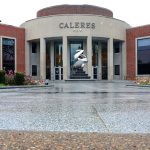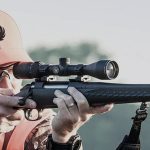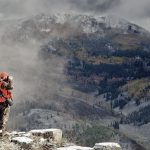It languished for about a decade, but now the American fitness phenomenon is coming to life again, resuscitated by the least likely demographics — “older” participants. From 1998 – 2004, the number of frequent fitness participants aged 55+ zoomed by 33%, compared with a growth rate of 13% for Baby Boomers aged 35-54, and zero growth for the “traditional” fitness participant aged 18-34. These were among the findings of the 18th annual SUPERSTUDY® of Sports Participation, conducted among 14,684 Americans nationwide in January 2005 by American Sports Data, Inc. (ASD).
25% of the nation's 41.3 million health club members are now over 55, the quintessential statistic that — according to ASD president Harvey Lauer — “represents not only a vast change in American attitudes and perceptions, but also an imminent restructuring of the health club and fitness industries, and most crucially — the seed of monumental healthcare reform in the United States.
“The growth of senior fitness is the unifying theme that explains many of the changes we are seeing on the ground” he continued. It is no coincidence according to ASD, that the fastest-growing fitness activities in the U.S. are of the kinder-and-gentler variety that reflect older and disproportionately female age segments. Since 2000, Pilates has grown meteorically — from just 1.7 million participants to 10.5 million in 2004 — a quantum leap of 506%. Originally an exotic preserve for older women, Pilates continues to spill over into the mainstream — inexorably declining in average participant age:
2000 43.6 2001 39.2 2002 35.1 2003 35.2 2004 33.7
With an average age of 38.5, Elliptical Motion Trainer exercise now claims 15.7 million fitness participants, an increase of 306% since 1998. After Treadmill Exercise and Stationary Cycling, this knee-friendly equipment is the third most popular form of cardio equipment exercise.
With participants averaging 38.2 years of age, the compound measurement of Yoga/Tai Chi has grown by 118% during 1998 – 2004. At 11.2 million participants, Recumbent Cycling, a particularly back-friendly exercise for older Americans, has grown 66% from 1998 – 2004. With an average age of 42.6, Recumbent Cycling is the third “oldest” fitness activity, surpassed in participant age only by Fitness Walking and Aquatics. Usage of Hand Weights and Dumbbells, still other examples of less taxing senior-friendly fitness, has increased by 29% and 34%, respectively — compared with a rise of only 13% in more strenuous Barbell lifting. People aged 55+ also constitute 25% of the 6.1 million Americans who paid for the services of a personal trainer in 2004.
Mature exercise enthusiasts are not merely playing havoc with abstract fitness statistics; they are rocking the foundations of fitness facilities across the U.S. Ripples of the senior shock wave are being felt throughout the health club industry, as YMCA/YWCA memberships increased substantially in 2004, along with “other” fitness facilities — the survey classification which includes an exploding “Curves for Women” phenomenon and its Express Workout copycats. In the 2004 SUPERSTUDY® of Sports Participation, people over 55 comprised 35% of all memberships in “other” fitness facilities. Very strange bedfellows indeed, YMCA's and Express Workout clubs — independent yet related phenomena that have dramatically impacted market share in the health club industry. “Curves”, (the Mecca for older, out-of-shape women), and YMCA's, (the traditional haunt of aging exercisers), have unwittingly conspired to block the advance of high-end clubs.
Pricing trends are equally compelling. For the first time since the inception of the research in 1988, average health club dues have dropped — from $36.85 per month in 2003 to $33.90 in 2004: a startling 8% reversal but natural aftershock of the graying fitness revolution.
The massive influx of older Americans has many roots, according to ASD:
- Many of today's mature fitness participants were present at the genesis of the fitness revolution these early converts made a lifetime commitment and never looked back. As the “pig” moved through the “python”, those 30-somethings from the 1970's are now over 55.
- Social norms have changed dramatically over the last 30-40 years. In the 1950's, the sight of an old man running through the streets in his underwear would have inspired our mothers or grandmothers to call the police; today, the image is commonplace. Fitness has achieved universal social acceptance (women can sweat and even grow muscles!) as exercise for seniors is widely mandated by medical professionals.
- Increasingly, exercise is being prescribed for osteoporosis, hypertension, diabetes, heart disease and other maladies that afflict older populations.
- The U.S. population is aging, and the average lifespan is increasing. Psychologically, there has been a 20-year shift in perceptions of age, and our expectation of vigorous life expectancy. A generation ago, 40 was “middle-aged”, 50 was “old” and 60 was “dead”. Today, 65 year-old children routinely care for 85 year-old parents.
- Less taxing forms of exercise and equipment are being devised to accommodate an aging population Kinder/Gentler fitness activities are enthusiastically promoted to attract and encourage senior participation. Yoga, Pilates, Recumbent Cycling, Treadmills, Fitness Walking, Aquatics, Hand Weights and last but least, Chair-Aerobics — are all expressions of this megatrend.
The SUPERSTUDY® of Sports Participation was conducted in January 2005 and based on a nationally representative sample of 14,684 Americans over the age of 6, who were among 25,000 respondents targeted in a sample drawn from the consumer mail panel of NFO Worldwide. 103 sports and activities were measured along over 20 demographic, attitudinal and behavioral dimensions. Data were also collected on Health Club membership and other subjects pertinent to Physical Fitness. This annual tracking study has been conducted by ASD every year since 1987, and sponsored by the Sporting Goods Manufacturers Association of North Palm Beach, Florida and the International Health, Racquet & Sportsclub Association of Boston, Massachusetts.












